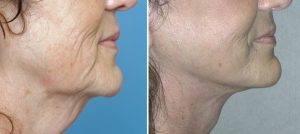As the overall number of cosmetic procedures and surgical providers increases, the number of potential complications and adverse outcomes will also become more prevalent. While there are numerous site-specific problems that can occur with any plastic surgery, such as infection and wound healing issues, the number of medical complications that are potentially lethal that can occur are relatively few. The most significant one is deep vein thrombosis, known as DVT.
DVT and its deadly cousin, pulmonary embolism (PE), are well known major complications from any type of surgery that can result in significant morbidity and death. It is estimated that well over 2 million patients a year are affected which makes it more of a medical problem that many more commonly recognized cancers and medical diseases. This has resulted in many standard preventative surgical practices such as automated compression devices on the lower legs, adequate IV hydration and recognition and treatment of high-risk patients with anticlotting drugs. DVT is of even greater consequence in cosmetic surgery because it is elective and the risk to the patient is purely optional.

While the very low incidence of DVT is relevant, what is equally if not more interesting about a paper like this is what it reveals about the patient population studied specifically that of facelifts. The average patient age was 58 years old and most were women. (92%) The majority of the patients (71%) would be classified as overweight with a BMI greater than 25. The most common accompanying medical condition was high blood pressure (23%) and an equal percentage was taking antidepressant medication. Three-quarters of the study patients only had a facelift (76%) with an average operating time of slightly over 4 hours.
The overall number of complications was 6% with the most common problem being a hematoma. Men experienced complications at a higher rate than women. Patients having been on aspirin before the surgery (even though it was stopped) and those with high blood pressure were a higher risk for hematoma. Both patients that developed DVTs (0.3%) had a facelift in combination with another procedure and their surgery lasted more than five hours.

Facelift surgery is very safe and has a very low risk of any major medical problems. It has a high satisfaction rate and almost always heals well with a quick recovery. While developing a hematoma is distressing, it is a problem that can be quickly solved and has no long-term consequences on the final result. Major medical problems, like DVT, are rare and contemporary prophylaxis methods appear to be very effective at prevention.
Dr. Barry Eppley
Indianapolis, Indiana


